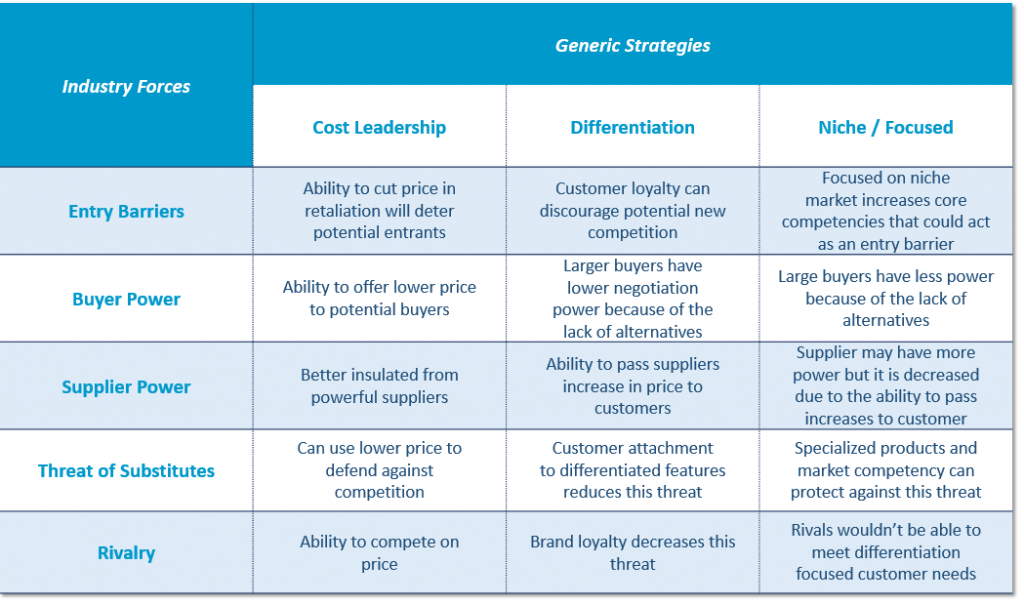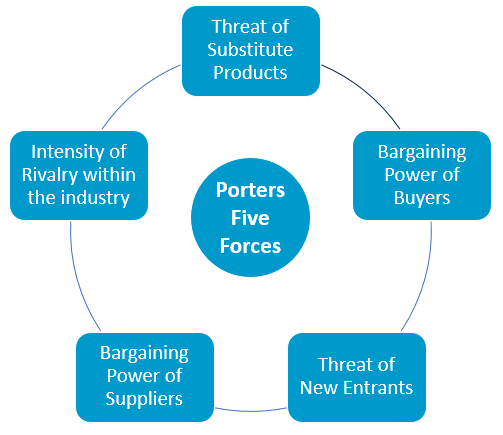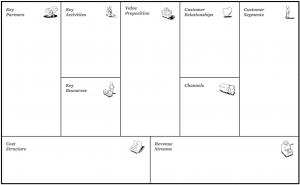Difficulty: Time:
What is Porter’s Generic Strategies model?
Porter’s Generic Strategies is another simple tool to outline the major strategic options that a business is able to undertake. We believe it is a great tool to use, but far from complete. Though, choosing one of these may lead your strategy there are many elements here that are overlooked. To Porter, they may have seemed like details but to everyday small businesses they should be considered. This is why we also suggest taking a look at our SWOT analysis at the end of your strategic development.
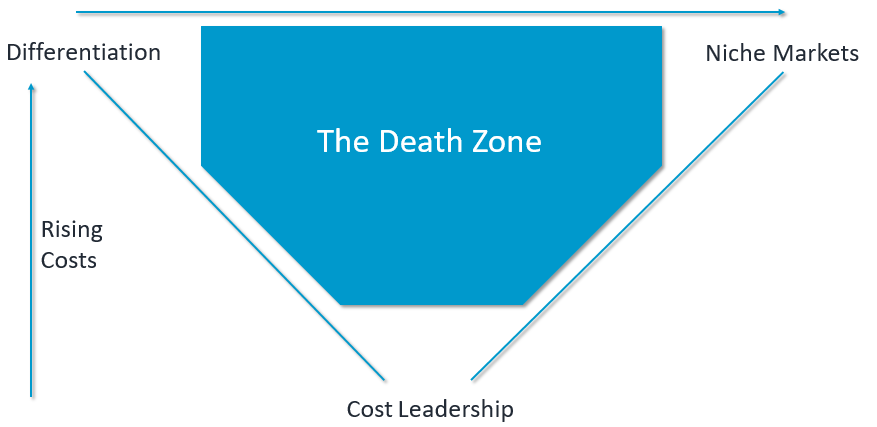
What is Porter’s Generic Strategies model used for?
Porter’s Generic Strategies model is nevertheless a great simple way to establish a strategy which can create sustainable competitive advantages for you. Using this model, though three options are available, you must consider the options within two dimensions. These are the sources of competitive advantage and the competitive scope of the industry. The former will establish whether your products are differentiated or they are the lowest cost producer in the market and the latter will determine whether your business should focus on a narrow niche of the market or the market as a whole. In other words it will either be the cost or uniqueness of the product and the scope of the target market will either be broad or narrow.
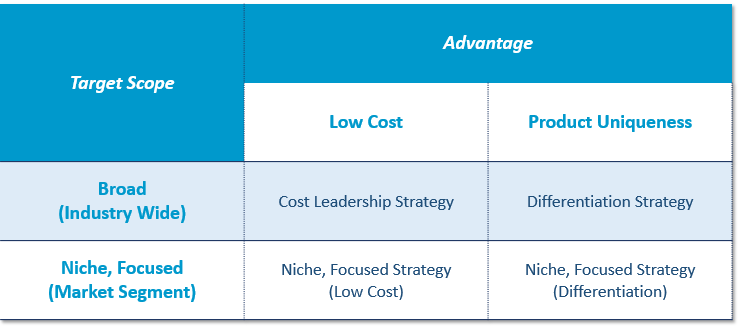
How do you use it in practice?
The three different strategies as you have probably already seen are either: cost leadership, differentiation or a focused/niche strategy.
Cost Leadership: Basically means that you have a competitive advantage being able to produce products at the lowest cost. The achievement of this is not trying to be producing at the lowest cost, but actually doing so. The different ways to achieve this are through special access to resources, outsourcing to labor intensive markets (India, China, or other specific Asian markets), or having the expertise to efficiently manufacture products. It is usually not department specific, but the company as a whole should integrate this strategy and exploit all sources of cost advantage, including selling a standardized product.
Differentiation: A differentiation strategy will focus on either R&D or design. Here you are able to provide very unique products to your customers. And your customers should value this, as the product is focused on the features which generate additional value to those customers. This can lead to charging higher prices, which will cover the additional costs to produce the unique and non-standard features. The long-term downside is that these features may end up being added by your competition, or that your customers may change their desires or requirements. Thus, putting extra pressure on you to be innovative and to improve over time.
Some of your internal strengths for this strategy should include: having access to scientific research, your workforce should not only be skilled with expertise but also creative, you should build a reputation for being innovative and having high quality, as well as having a great sales team which is able to communicate the benefits of the features added to the products.
Focus -> Niche Markets: This strategy will concentrate on specific segments. But, within these segments is where you will attempt to achieve either differentiation or cost leadership position.
The downside of this strategy is that it is narrow, and you will only reach a limited amount of customers. Therefore, you will have much lower volume turnover and less bargaining power with your suppliers. But, the upside comes from a higher degree of customer loyalty led by the premise that you mainly focus on their exact wants and needs. And these extra costs to produce specific and unique products can be passed on to your customers, because substitute products may not exist.
But be aware, these markets will not last long. In the long run these specialized markets may disappear because of changing needs, and its also quite possible that other market participants, most likely the market cost leaders, begin adapting their products in order to compete against you directly.
Tips and Tricks (What to do and don’t do)
It is very, very important not to try to achieve more than one here. In order to achieve long term success, you should focus on one of these strategies and keep or gain market share position. The companies that have tried to go after more than one of these positions are in danger of sending mixed signals to the market. Those companies won’t be “stuck in the middle with you” but more or less alone. And thus will end up without the ability to create any sort of competitive advantage in either of the strategies.
Example at a real use case
Below we have provided an example how you could use Porters Five Forces to develop potential strategic directions to focus on.
